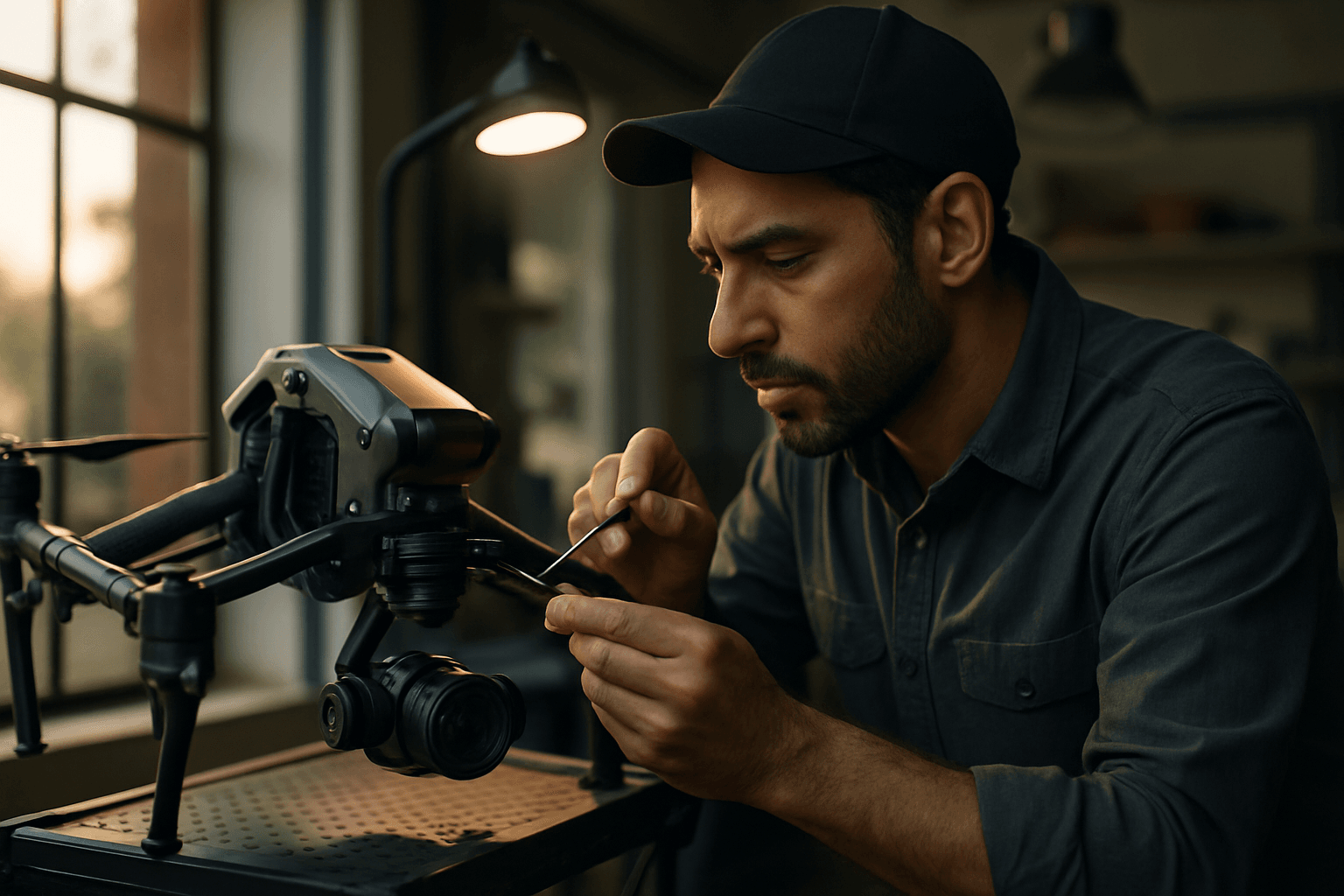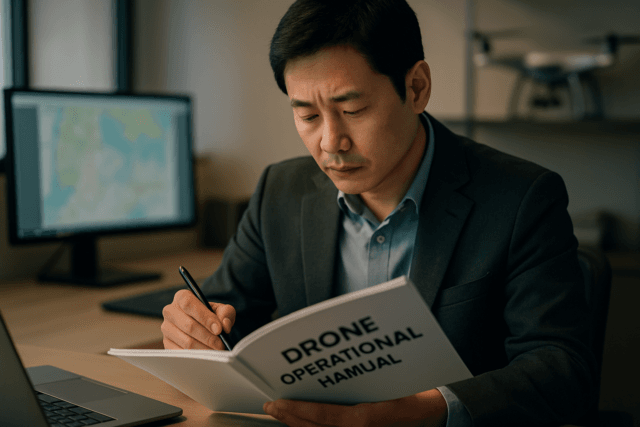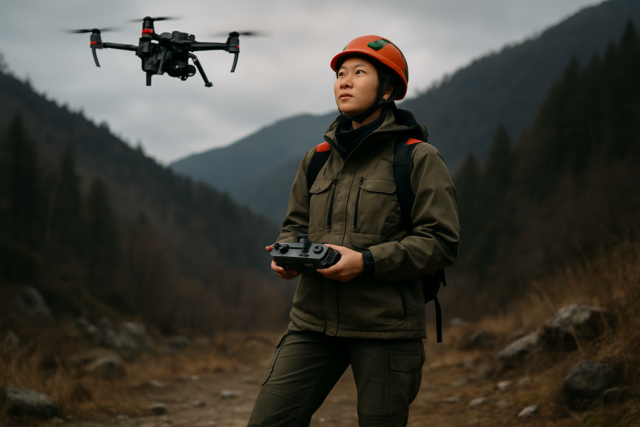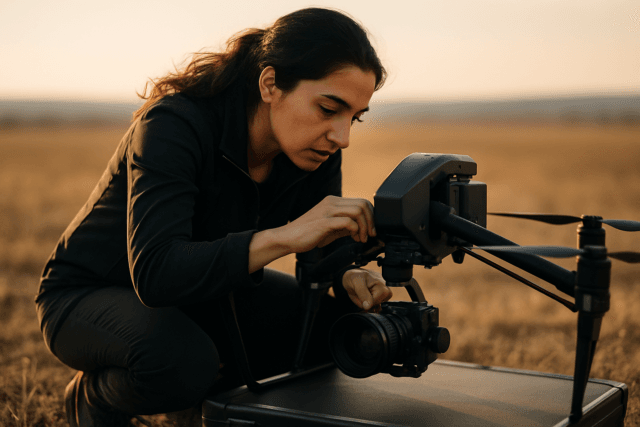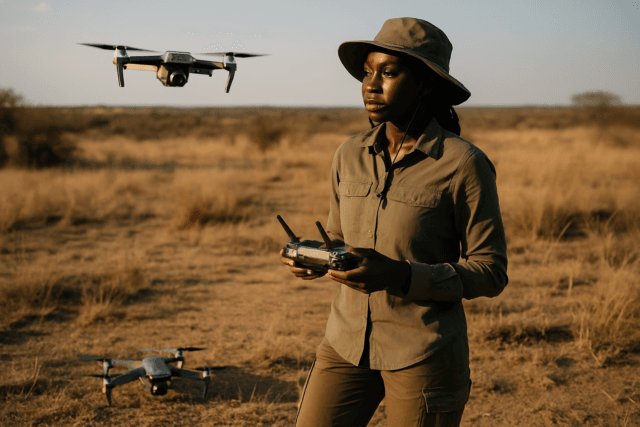Imagine soaring through the sky, capturing breathtaking aerial views, only to review your footage and find it shaky, distorted, or tilted. This frustrating scenario is a common challenge in drone videography and photography, often stemming from the inherent instability of an aerial platform. The solution lies in a crucial piece of technology: the drone gimbal. This sophisticated device is the unsung hero that transforms erratic aerial movements into professional, butter-smooth cinematic shots and crystal-clear stills.
What is a Drone Gimbal?
A drone gimbal is a mechanical stabilizing device designed to hold a camera or other payload steady during flight, effectively minimizing unwanted movements and vibrations. Essentially, it acts as a steadying hand, ensuring the mounted camera remains level and focused, regardless of the drone’s motion, wind gusts, or turbulence. This is paramount for achieving high-quality aerial photography, filmmaking, industrial inspections, and scientific mapping.
How Drone Gimbals Work: A Symphony of Precision
The magic of a drone gimbal lies in its intricate mechanism, which combines mechanical design with advanced electronics and software.
Core Components and Their Roles
- Mechanical Structure: The gimbal physically holds the camera and allows it to pivot around one or more axes.
- Motors: Gimbals utilize brushless motors or DC servo motors at each axis to provide fast, smooth, and precise stabilization. Brushless motors are generally preferred for their superior image quality, though servo motors are lighter. These motors actively adjust the camera’s position in real time.
- Inertial Measurement Unit (IMU): This vital sensor, containing gyroscopes and accelerometers, detects and reports the drone’s motion and orientation to the gimbal’s control unit.
- Gimbal Control Unit (GCU) / Microprocessor: This “brain” receives data from the IMU and instructs the motors to apply counter-movements, cancelling out the drone’s motion.
- Algorithms: Advanced algorithms, including stabilization, motor control, object tracking, and sensor fusion algorithms, process data and ensure the gimbal responds accurately and in real-time.
The Stabilization Process
As the drone moves through the air, it experiences three primary rotational movements:
- Pitch: Tilting up and down (nose of the drone moves up or down).
- Roll: Tilting side to side (one wing moves up, the other down).
- Yaw: Rotating left or right around its vertical axis (like turning your head left or right).
Without a gimbal, these movements would result in shaky, blurry, or tilted footage. The gimbal’s IMU constantly senses these shifts. The GCU then uses this data to command the motors to move the camera in the exact opposite direction and with the precise force needed to counteract the drone’s motion, keeping the camera perfectly stable and level. This real-time compensation ensures smooth video even during rapid maneuvers or in dynamic conditions like wind.
The Indispensable Role of Gimbal Stabilization for Smooth Footage
For anyone involved in drone photography or videography, a stable camera is not merely a luxury; it’s a fundamental requirement for professional-quality output.
- Professional-Quality Footage: Gimbals eliminate jitters, shakes, and sudden movements, ensuring videos are smooth and free of distractions, even when the drone encounters wind gusts or performs turns. This allows for cinematic and polished results.
- Accurate Data Collection: For applications like mapping, surveying, or inspections, where precise data is crucial, a stable camera ensures clear and reliable imagery. Motion blur and geometric distortions are significantly reduced.
- Enhanced Control and Creativity: Gimbals allow pilots to control camera angles precisely without needing to adjust the drone’s entire position. This frees the pilot to focus on creative flight paths, knowing the camera will remain stable.
- Efficiency: By maintaining a stable image, gimbals reduce the need to re-fly missions due to shaky footage, saving battery life and time.
Types of Drone Gimbals
Drone gimbals are categorized based on their axes of stabilization and motor systems, each offering varying levels of stability and performance.
By Axes of Stabilization
- 1-Axis Gimbal: Stabilizes the camera in only one direction, typically pitch (tilt). While lighter and less expensive, they offer limited stabilization, primarily suitable for smooth time-lapse or panoramic photos in very calm conditions.
- 2-Axis Gimbal: Compensates for pitch (tilt) and roll (side-to-side rotation). These provide significantly clearer images than 1-axis gimbals and are found on many entry to mid-level consumer drones. However, they do not stabilize against yaw movements, which can still lead to “head-shaking” in footage, especially during turns.
- 3-Axis Gimbal: The gold standard for professional drone videography, a 3-axis gimbal stabilizes the camera across all three rotational axes: pitch, roll, and yaw. This provides the highest level of stability, ensuring exceptionally smooth, judder-free, and cinematic footage even during complex flight maneuvers, rapid movements, or in windy conditions. Most high-end and professional drones feature 3-axis gimbals.
By Motor System
- Brushless Motor Gimbals: These are the most common type in modern drones, offering fast, smooth, and precise stabilization, ideal for professional videography and high-precision mapping.
- Servo Motor Gimbals: Lighter and simpler than brushless counterparts, servo gimbals are used when weight is a significant consideration.
By Integration
- Integrated Gimbals: Many popular drones, like the DJI Mavic series, feature gimbals built directly into the drone’s design. These are engineered for optimal performance with the specific drone model, offering increased portability and simplicity.
- External Gimbals: Industry professionals often use external gimbals for projects requiring heavier cinema cameras or specialized sensors. These units are often highly customizable and offer advanced functions, but may add to the drone’s overall weight and complexity.
By Stabilization Method
While the focus is primarily on mechanical gimbals, it’s worth noting other stabilization types:
- Mechanical Gimbals: Utilize physical motors and sensors to counteract movement, as described above. They provide the most precise and smoothest footage.
- Digital Gimbals (Software-Based): These rely on software algorithms to stabilize footage by adjusting the image through computer calculations. While lightweight, their stabilization is generally less precise than motorized gimbals.
Factors Affecting Gimbal Stabilization Performance
While gimbals are highly effective, several factors can influence their performance:
- Drone Movement and Speed: Aggressive or sudden drone movements can challenge even the best gimbals. High-speed flights can also introduce vibrations that a gimbal must work harder to counteract.
- Wind Conditions: Strong winds or turbulence can cause the drone to tilt and shake, putting extra strain on the gimbal.
- Payload Weight and Balance: The weight of the camera or payload is critical; if it exceeds the gimbal’s capacity, it can compromise stability and flight performance. Proper balance of the payload within the gimbal is also essential.
- Gimbal Settings: Many drones allow users to adjust gimbal pitch speed, smoothness, and endpoint settings. Improper settings can lead to jerky or unnatural camera movements.
- Physical Damage or Obstruction: A damaged or obstructed gimbal (e.g., if the protective cover is not removed) will not function correctly, leading to tilting or instability.
Tips for Achieving Ultra-Smooth Drone Footage
Beyond having a high-quality gimbal, piloting techniques and proper settings significantly impact footage smoothness:
- Smooth Stick Movements: The most crucial tip is to operate the drone’s control sticks with small, gentle, and fluid movements. Avoid abrupt changes in direction or speed, which can translate into jerky footage.
- Adjust Gimbal Settings:
- Gimbal Pitch Speed: Lowering this setting (e.g., between 5 and 10) makes the gimbal respond slower, resulting in more cinematic and smooth pan or tilt shots.
- Gimbal Pitch Smoothness/Stop Slowly: This controls how much the gimbal “coasts” to a stop after the joystick is released. A higher setting allows for a gentler, more natural stop, preventing abrupt halts that can look jarring.
- Yaw Endpoint: Reducing the yaw endpoint (e.g., 70-80%) can limit the maximum yaw speed, making turns smoother.
- Utilize Cruise Control: If your drone has a cruise control feature, use it to maintain consistent movement patterns, making cinematic shots easier to capture.
- Simple and Fluid Flight Paths: During a single shot, try to stick to one primary movement (e.g., flying straight forward, orbiting). Introducing too many erratic changes in direction mid-shot can disrupt smoothness.
- Fly in Cine Mode (or Tripod Mode): Many drones offer a “Cine” or “Tripod” mode, which significantly reduces the drone’s maximum speed and responsiveness, making it easier to execute slow, controlled, and smooth movements.
- Shoot in Higher Frame Rates: While not directly related to gimbal stabilization, shooting at higher frames per second (e.g., 60fps) provides more data, allowing for smoother slow-motion effects and greater flexibility in post-production stabilization if needed.
- Post-Production Stabilization: While a gimbal is the primary tool, minor shakes due to wind or subtle piloting errors can sometimes be refined in video editing software. This should be a “cherry on top” for small corrections, not a fix for major jitters.
By understanding the technology behind drone gimbal stabilization and applying these practical tips, drone pilots can consistently capture stunning, smooth, and professional-grade aerial footage, elevating their videography to cinematic heights.

